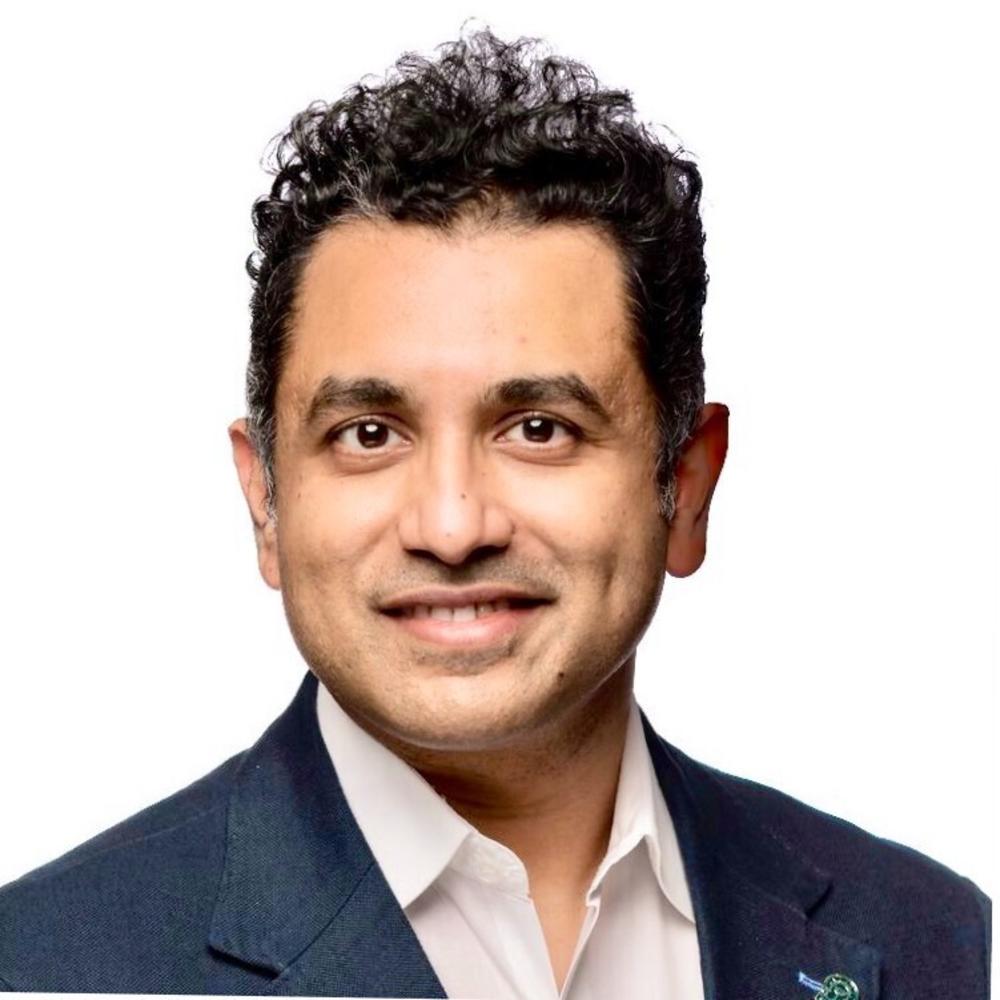
February 13, 2020
Journey to the Top of Maslow’s Pyramid With GovHub

Ever since the inception of Digital Services Georgia (DSGa), we have followed our overarching mission, our North Star, our Why:
Hack the bureaucracy! Make information and services easy to understand, and accessible to all Georgians.
It sounds simple enough, but those of us who proudly serve in civic tech know the Herculean effort it takes to achieve this mission. Government organizations often run behind the private sector in digital innovation built on design thinking and user-centric agile principles. Adopting this philosophy requires a culture change that doesn’t happen overnight.
At the state of Georgia, we are ahead of most of our peers, having started on this path in 2011 with the launch of the precursor to GovHub — what we consider our base on Maslow’s pyramid of needs.
Abraham Maslow theorized that humans are motivated by five levels of need that start with the physiological, safety, and belonging. This is where we are so far, and it was no easy feat getting here. Now, we must keep climbing Maslow’s pyramid to achieve esteem and self-actualization — a more mature level of service delivery. Let me explain.
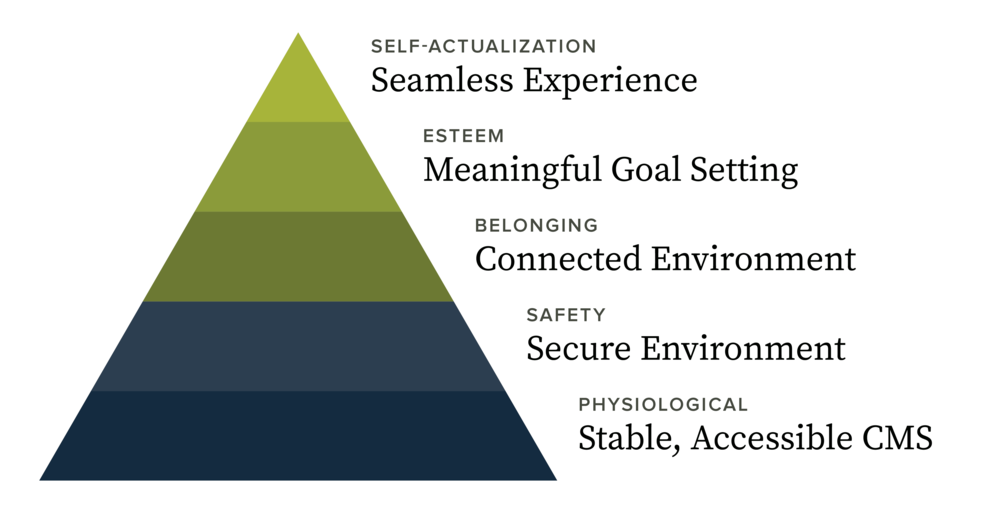
Digital services teams are transforming the way governments serve the public. There is a global movement among designers and developers to apply their skills in the public sector, delivering official information and essential services with intuitive and accessible digital experiences.
The DSGa team has been working with state agencies and elected officials to fix our information layer. In the last few years, we have centralized the majority of our key websites from legacy content management systems, homegrown solutions, or just a gigantic pile of plain static pages hyperlinked to each other, to a centralized, open source web publishing system powered by Drupal.
In 2011, we adopted a customized version of Drupal called OpenPublic, developed and supported by our longtime development partner, Phase2. (Kudos to our P2 friends who designed this system that served our state for 8 good years!) Eight years is a long life in the world of fast-evolving technology. During this time, the DSGa team trained content managers across state agencies to see their content through the eyes of their users.
Now, in 2020, the DSGa team just finished migrating 80+ government websites onto GovHub, Georgia’s next generation of digital publishing powered by Drupal. We’ve come a long way as a state since 2011, and we’ve laid the foundation to keep improving in the future.
Eight years is a lifetime in the world of fast-evolving technology. As we sunset our beloved Drupal 7 environment, the DSGa team sheds a happy tear.
Our Base: Physiological and Safety Needs
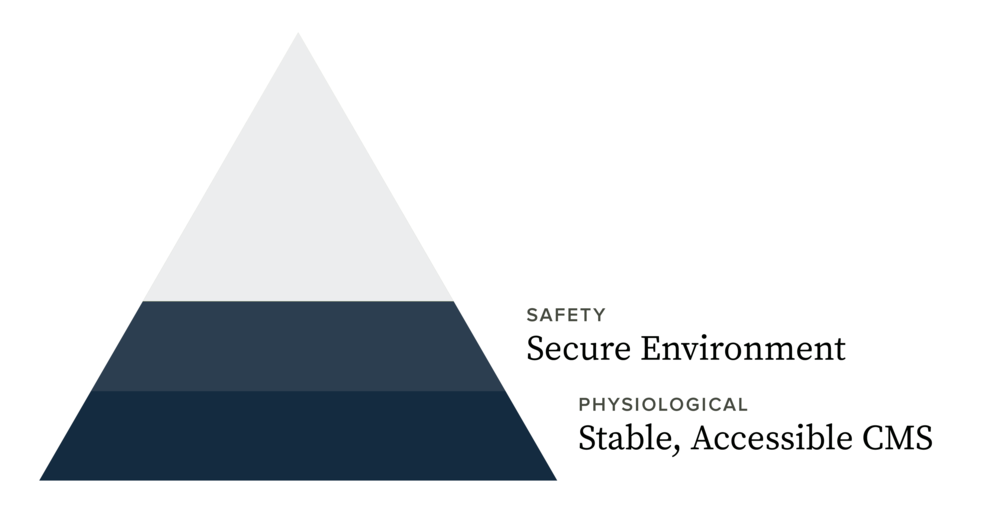
The DSGa team first fulfilled physiological and safety needs by finding a stable, secure home for our websites with Drupal, one of the leading open source, accessibility compliant content management systems (CMSs), with a growing footprint across the web. It also has a wonderful community innovating, nourishing, and supporting the product. Cloud hosting with Acquia gave our websites the freedom to scale, and Acquia’s security practices are second to none.
Transitioning from the “web pages” paradigm to a holistic design system that uses content types and relational data was a mind shift for our content managers in the early days. We were happy that most state agencies agreed to use a common system for content management, but that didn’t prevent them from bringing a lot of stale content along with them.
Thousands of legacy content items and files hadn’t seen daylight for ages and were unlikely to see it in the new system. The old sites evolved according to how their most recent content manager thought to do it. Like most government organizations, very few Georgia agencies employ trained content managers.
Out of more than 900 registered content creators, editors, and reviewers, most have website duties on top of their “real job.” Introducing a new CMS or upgraded technology wasn’t going to fix this issue by itself. We needed to think harder about how technology can help our content managers do the right thing. To enable best practices, we needed to build the system right!
New CMS can’t fix content debt
Vision: A Sense of Connection and Family
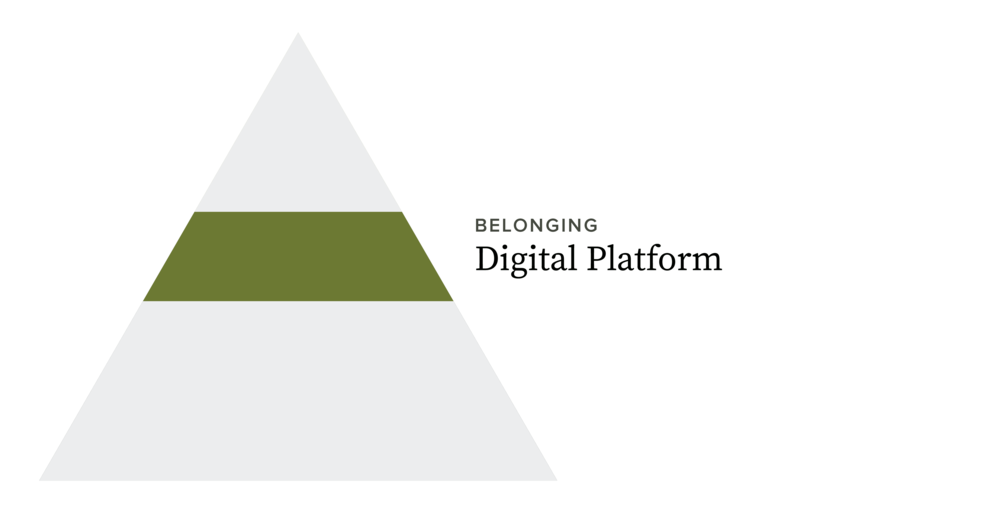
Eyeing the higher steps of the pyramid, we worked with elected officials and state agency partners to further enhance their content. As technology advanced through the years, we realized that our content needs to appeal to people and machines at the same time. In 2017 we decided to upgrade our web publishing platform to a digital platform using the power and features of Drupal 8.
We partnered with two accomplished industry leaders — IDEO and Lullabot — as our design, content, and development partners. A new tool, new partners, and new approaches gave us an opportunity to tackle our content challenges with a fresh perspective.
After exhaustive user research, we identified several challenges people faced when using Georgia government sites. We prioritized the following for our new digital system’s minimum viable product:
-
We planned a unified approach; a designed family to visually represent all our digital properties across siloed organizations and departments. Digital properties in the form of websites that address the informational layer for state services and applications that address the transactional layer of state services.
-
We wanted to extend the unified approach beyond just a common look and feel, but a way to present our information reflecting people’s journeys engaging with the state. We needed to focus on the experience as an enterprise, not a collection of disparate organizations.
-
We rearranged our content to make our websites people-centric. This involves a change in how we present ourselves. Instead of structuring a website with the agency/organization at its core, we structured it around the services people seek. This approach required agencies to rethink if a welcome message or vision statements are indeed important. This needs to be an ongoing process and every new piece of content added needs to go through this thought funnel.
-
We scrubbed and contextualized our content to make it findable and understandable. More than 70% of our traffic comes from Google and other search engines. We needed to scrub our content of governmental jargon, irrelevant out-of-date information, and make it better aligned with the vocabulary people use. Even if SNAP Benefits is the official name of a program, most people search using the term “food stamps.” Start understanding people’s mental models and tailor your content.
-
We architected GovHub’s content models to make content management easy for our content managers. Following the product philosophy “build the right thing and build the thing right,” we built GovHub in a way that helps our hundreds of content managers to manage content the right way with low effort. We used connected content to create a “create once, repeat everywhere” approach. Content created on agency websites can be reused across other parts of the agency website or on the state’s official website Georgia.gov, without having to instantiate or duplicate the content item.
-
We planned and embedded data-driven decision making. We partnered with Siteimprove to leverage their analytics, content governance, policy, and accessibility auditing tools to make informed decisions. This enables us to foster a digital culture where data supersedes opinions.
What’s Next? Esteem and Self-Actualization

Celebrating achievement and a feeling of accomplishment is only possible if you know what you’re aiming for. In most cases, our agencies have been relying on websites as a digital outlet of organizational policies and memos.
When asked, “What is the goal of your website? How do you define success?” we heard several agencies say, “We want the best-looking website,” or “We want to win awards,” or “ We want our website to have more hits.”
The DSGa team believes strongly that digital competence can transform the way state government serves its residents. We are working closely with agencies to define the goals that will matter most for their sites’ users.
Define goals and success for your website
The DSGa team will work with agencies to reorient expectations, identify goals, objectives and key results, and set key performance indicators.
We know that we cannot manage things we don’t measure. So measuring ongoing performance will be a priority going forward. Every agency will need to prioritize the metrics that inform us about the key services delivered by our organizations. Instead of just looking at pageviews, bounce rates, or generic indicators, we will focus on the numbers that are actionable and stay away from vanity metrics. As entrepreneur Eric Ries puts it:
Vanity metrics: good for feeling awesome, bad for action.
A vanity metric is a data point that, if consumed without context, may make you feel good (or bad) about your organization or department, but will not give you any actionable insight.
You may see a spike in your pageviews on a certain day or week and may want to recreate whatever magic you did that day to show increased traffic. But is multiplying web traffic your goal? If your website’s key goal is to make sure people are better informed about SNAP benefits or point people to the closest location of your agency, this spike will not translate into anything actionable.
Performance goals for private sector websites aren’t always applicable to those serving the public. For example, an e-commerce site in the private sector may love to keep users clicking around their site for a long time, but our goal is for the public to find exactly what they’re looking for as quickly as possible.
Use the 80/20 rule for your content
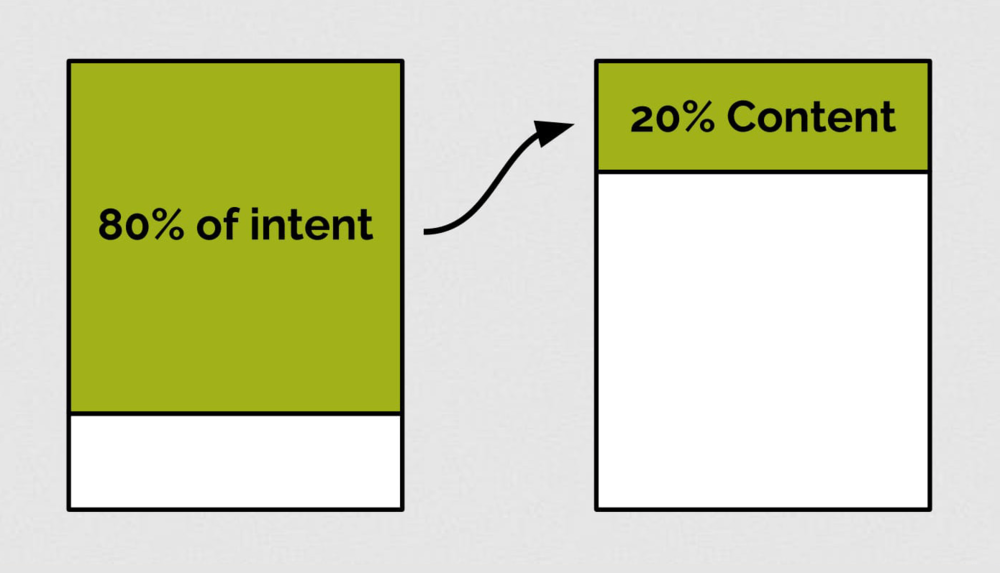
The 80/20 rule, also known as the “Pareto Principle,” was named for an Italian economist Vilfredo Pareto who noticed that people in society seemed to divide naturally into the top 20% and bottom 80% in terms of money and influence. The key idea is that no two elements are equal. Each has a different weight and importance.
We can take Pareto’s 80/20 rule and apply it to almost any situation, although the actual divide may not be 80/20. When we assessed the content impact of Georgia.gov, we found that around 15% of our content served about 90% of our site users’ intent. Therefore, we began prioritizing our efforts to improve the 15% content before we tackled the other 85%.
Now that we have actionable data at hand, our content team will start working with state agencies to apply the 80/20 rule to agency websites. Just like the migration project, we have a prioritized list of agencies we will contact in the coming weeks. If you wish to discuss schedules and specifics, feel free to contact us via the support desk.
Orchard: Georgia’s design system
The concept of a design system is relatively newer in the civic tech world. Design systems offer a cohesive visual language to tie together hundreds of our websites and transactional applications. The DSGa team has come a long way from bringing together a collection of websites that had nothing in common with each other. Our research shows that Georgians are not interested in understanding the complexities of government. When they looked for answers, they were sent to multiple websites with a variety of visual identities, inconsistent navigation, and interaction patterns. This creates confusion and erodes public trust.
The DSGa team worked with Jason Pamental and Lullabot to create a unified design system, Orchard, which unifies all websites hosted on GovHub. We envision further adoption of this design system to power non-GovHub websites and transactional applications. Creating a seamless transition between disparate technologies, the design system allows us to manage a low friction user experience at the abstraction layer.
Stay tuned
As we keep scaling up the pyramid, we know it will be a long journey to the summit. Implementing new technology is only one aspect of the journey. The DSGa team migrated content from 80+ legacy websites and we couldn’t have done it without the stellar support of our development partner Lullabot and migration partner Mediacurrent.
In the coming weeks, DSGa team members and our extended partner teams will share their takeaways, thoughts, and lessons learned from the GovHub project. Subscribe to our newsletter or follow us on LinkedIn and/or Twitter to be notified for future updates.
According to Maslow, when lower-level needs are met, the next level needs on the hierarchy become the focus of attention. While we pause at this point to celebrate the completion of a long 18-month migration, the next big phase of our journey has just begun!
